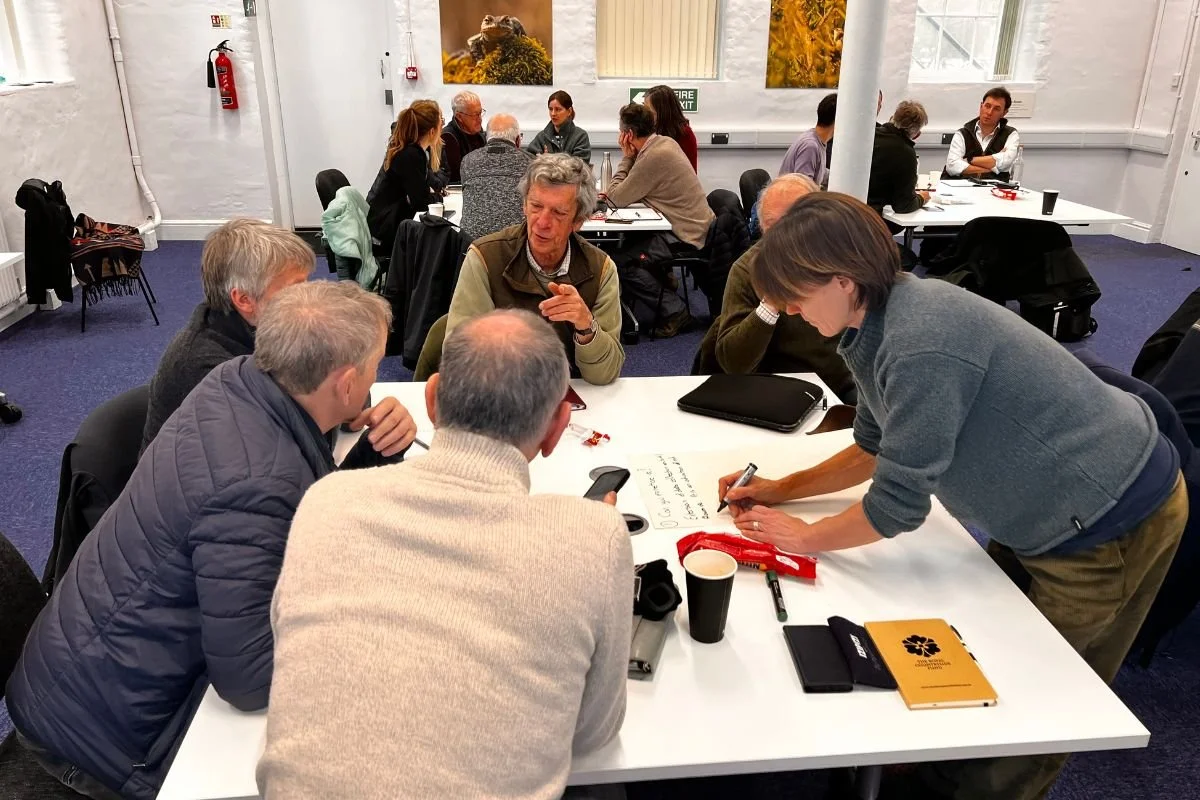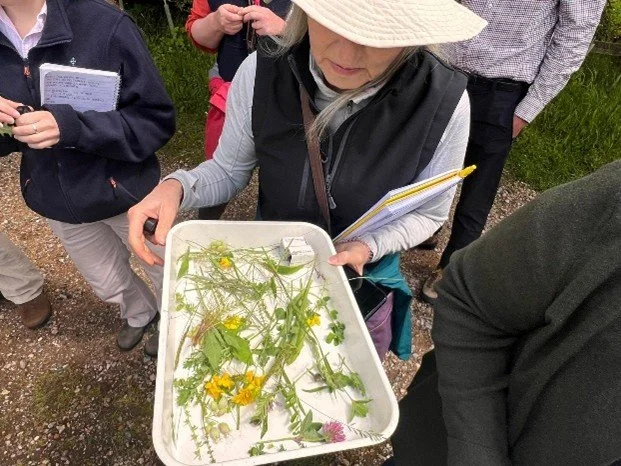Farmer-Led Monitoring: 4 Key Insights From our DEFRA Test and Trial
We’re proud to have recently hosted a Test and Trial for DEFRA, which will help to inform and develop their Environmental Land Management (ELM) schemes.
DEFRA’s Tests and Trials place farmers at the heart of nature monitoring.
As a community of landowners passionate about landscape-scale environmental recovery, we already suspected that those most closely connected to the land are often its most insightful observers.
So, we jumped at the opportunity to explore how farmers could collect robust environmental data, and their views about doing it.
We invited farmers from across our region – from Breckland to the Wensum, from North Norfolk to the Upper Deben – to join us on a series of workshops where we showcased techniques and explored their perceptions on a variety of monitoring topics.
We invited farmers from across our region – from Breckland to the Wensum, from North Norfolk to the Upper Deben – to join us on a series of workshops.
The results were overwhelmingly positive. Here’s what we learnt…
1. There’s Enthusiasm Among Farmers for Biodiversity Monitoring
Most farmers at the workshops expressed not only interest but real enthusiasm in learning how to monitor biodiversity outcomes on their land.
From SFI (Sustainable Farming Incentive) hedgerow assessments to soil surveys and fixed-point photography, farmers were eager to try new tools that brought them closer to the data that will help shape the future of land management.
Over 70% of participants in our hands-on workshops said they already felt confident implementing certain monitoring techniques without needing external advisors.
2. Community and collaboration are key
Of course, farmer-led monitoring isn’t without its hurdles. Time, cost, confidence in data accuracy and concerns about how data will be used all surfaced during the workshops.
However, these are solvable problems. The Test and Trial showed that with clear guidance, practical demonstrations and a sense of ownership over the process, these concerns become opportunities for collaboration and innovation.
We found that building farmer-to-farmer dialogue – creating a “community of practice” within and across our farm clusters – was essential. Farmers learn best from each other, and when they do, their motivation grows.
Here at Wendling Beck, these knowledge networks are now informing how we think about future training, support tools and long-term monitoring strategies.
These knowledge networks are now informing how we think about future training, support tools and long-term monitoring strategies.
3. Choose the Right Tools
A key part of the DEFRA Test and Trial was assessing new tools like the WildMap platform and the e-Surveyor app developed by the Centre for Ecology and Hydrology.
These apps and platforms are not just useful for capturing data, they also enable farmers to visualise change over time and communicate their efforts to funders, advisors and the wider public.
The fixed-point photography app was especially well-received by farmers, who valued the ability to see changes in biodiversity season by season. It reinforced that nature recovery is not an abstract concept: it’s visible, tangible and deeply personal when you’re the one documenting it.
4. Farmer Engagement Shapes Policy That’s Based on Reality
Perhaps most importantly, this DEFRA Test and Trial showed how direct farmer engagement can strengthen policy.
By capturing on-the-ground feedback about what’s practical, what’s confusing and what’s inspiring, we’re helping DEFRA shape environmental Monitoring, Verification and Reporting (MVR) policies that are rooted in reality. We’re not just implementing policy – we’re informing it.
The experience here at Wendling Beck has deepened our belief that farmer-led monitoring is more than just a possibility. It’s a necessity for achieving meaningful, measurable, and resilient environmental change.
This Test and Trial showed how direct farmer engagement can strengthen policy.
Looking Forward…
As we continue to scale our work across Wendling Beck and the surrounding landscape, we’re committed to supporting a model of land management that respects the insight and agency of those who work the land.
The more we invest in farmer capacity, confidence and community, the more we unlock lasting environmental outcomes.
This DEFRA Test and Trial was just the beginning, and we’re proud to have hosted it. With the right support, farmer-led biodiversity monitoring can be a cornerstone of a greener, more collaborative future.
For more insights, check out our other news and blog articles, and to speak with a member of the Wendling Beck team, feel free to get in touch via our enquiry form.



